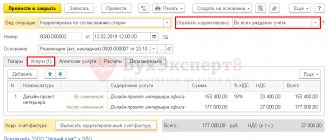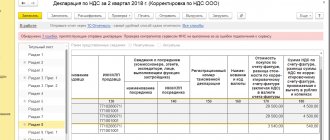With the advent of new technologies, people are less and less likely to take a pen and write something on paper. When typing on the keyboard, all inaccuracies in words quickly disappear thanks to auto-correction and text replacement, and grammar and spelling rules are quickly forgotten. This is especially true for words with double consonants. Losing a letter while writing is a common mistake.
Let's remember how to write “adjustment” and similar lexemes in order to understand when the doubling of sounds occurs.
Rules
A dictionary will help you find out how to spell the word “adjustment”.
Correction is on the list of terms and scientific vocabulary of Latin origin. In Latin the word form is written “correctio”, with two “rr”. In Russian it is also written “pp”. According to the norms that are accepted in the Russian language, borrowed expressions belong to the dictionary and their spelling just needs to be remembered. There are no rules for dictionary words; they are apart from spelling norms.
Examples of using the word in sentences
We advise you to look at several examples where this word is used:
- The president's speech before a speech can be adjusted many times.
- The magazine material needs correction.
- It is necessary to adjust your life attitudes in order to find your path.
How wrong
Omitting one “r” is not the only mistake. You can see “correction” and “correction” as often as “correction”. Remember, this lexeme is written with “pp”, “o” and “e”.
How measures for SZV-TD are adjusted in 1C: ZUP 8
In 1C:ZUP 8, information about the activities is submitted to the Pension Fund of Russia when in the document “Information on the work activities of employees, SZV-TD” the checkbox “Document accepted by the Pension Fund of Russia” is checked. In this case, documents related specifically to this report (orders, instructions) and specified in it are not edited. Each document contains a warning that information on the event has been sent to the Pension Fund. If the user still needs to make a change, this is done through the “More” button and then “Change document”.
Important! When a correction is made to a personnel document, the original entry becomes canceled. When it is repeated again, a new personnel event is created. When correcting the SZV-TD, the following is indicated - the first line will indicate cancellation, and the second line will contain new information. When canceling, only the first line with the sign of cancellation is indicated in the SZV-TD.
When corrections are made to a document that are not transferred to the Pension Fund, reposting the document does not create a new personnel event.
How to adjust a previously directed event
If it is necessary to adjust a personnel event, this is done in two ways:
- the document on the basis of which the event was carried out is corrected;
- a new document “Registration of Labor Activities” is generated in the “Personnel” or “Reporting, Certificates” tab → “Electronic Labor Books” journal.
The choice of adjustment option depends on what exactly needs to be changed. After making corrections, you need to create a new SZV-TD document.
Example 1
The employee got a job with the company on July 20, 2021. The information was transferred to the Pension Fund. Then in August they found an error that the hiring date was July 27, 2021. It is necessary to make adjustments to the SZV-TD.
To do this, you can correct the information in the “Hiring” document. The information has already been sent to the Pension Fund (the “Document accepted by the Pension Fund” checkbox is checked). At the top, the user sees a warning that the information has been sent to the Pension Fund of Russia, and it is not advisable to correct it.
To correct the information, you need to click “More”, then “Change document”, then correct the incorrect information, i.e. change the appointment date.
When the user creates a SZV-TD for August 2021, two lines will be filled in for the employee:
- with initial information that has a sign of cancellation;
- new information.
Date of cancellation of information - the date on the PC when the document was corrected.
Example 2
The organization submitted the SZV-TD to the Pension Fund, but indicated the wrong order number - ШФ00-000001. Regular numbers are entered on the paper work record, and therefore you need to indicate the number “1”. It is necessary that the information in the paper and work record books match. This means that an adjustment should be submitted according to SZV-TD.
The order number can be corrected through the “Registration of Labor Activities” document. The user clicks "Edit" and enters a date that must be later than the document date.
The document “Labor Activities” on the left side contains a list of employees for whom certain personnel activities were carried out. On the right side, it is specifically indicated what activities were carried out for the employee.
The user must select the action to be adjusted, after which two lines will be filled in:
- with canceled data with a note about cancellation;
- with the same data that can be edited.
To correct the information, you need to change the order number, and then click the “Post and close” document button.
In SZV-TD, the changed information will be reflected automatically when the document is generated again. It will contain two lines - both according to initial information with a sign of cancellation, and according to new information.
If in 1C:ZUP the order numbers are indicated not by simple numbering, but with prefixes, and are similarly written down in the paper work order, and it is also necessary that in SZV-TD the numbers are indicated with prefixes, you need to configure 1C. In the settings, uncheck the “Remove organization and information security prefixes from personnel order numbers” checkbox. This is done through the “Settings” section and then “Advanced settings”.
When specifying your own document numbering in 1C:ZUP, the user can manually indicate the number in the personnel document in the “Print” field. If this is done, the number will be reflected in SZV-TD.
When registering an event through the document “Registration of Labor Activities,” changes must be made using this document. The user clicks "More", then selects "Edit Document" and then clicks "Edit".
Meaning
Derived from the verb “correct,” which means to make changes. Comes from the Latin correctio, which means amendment, correction. In Latin, the verb corrigere is also used - to correct. The expression “correct” has an analogue “correctus”, that is, corrected. Initially, the word was used in the field of typographical typesetting, later it spread to other fields, including the military (fire adjustment).
Synonyms
There is a synonymous series that will help not only avoid mistakes, but also enrich speech:
- correction;
- editorial;
- make edits/amendments.
Adjustments and corrections
The Rules, approved by the commented resolution No. 1137, clearly distinguish between two concepts: making adjustments and correcting errors.
Adjustments are changes to the original cost made after shipment and by mutual agreement of the supplier and buyer.
Errors should be understood as incorrect information initially indicated on the invoice (for example, incorrect address of the supplier or buyer, someone else's TIN, etc.).
In accordance with this, two algorithms are described in detail. The first is for making, registering and accounting for adjustments. The second is to correct errors. Corrections must be made using adjustment invoices, and errors must be corrected by issuing new copies of invoices indicating the number and date of correction.
For simplicity, we will call the new copy with the corrected errors the corrected invoice. And the original copy, which is not an adjustment, is the original invoice.
Making adjustments
Adjustment invoice
After commented resolution No. 1137 comes into force, taxpayers must use a new (permanent) form for an adjustment invoice.
The main difference from the temporary form* is as follows. Previously, the indicators “before the change”, “after the change”, as well as the difference between “additional payment” and “reduction” had to be indicated in special columns. Now such indicators are allocated not columns, but rows.
In particular, for each item of the adjustment invoice there are four lines: A (before the change), B (after the change), C (increase) and D (decrease). To calculate the indicators for lines C and D, you need to subtract the figure from line B from the number in line A.
If the resulting value is less than zero, then we are dealing with an increase. It must be reflected in line B with a positive value, that is, without the minus sign. Line D should have a dash.
If the resulting value is greater than zero, we are dealing with a decrease. It must be reflected in line G with a positive value, that is, without the minus sign. There should be a dash in line B.
After filling out all the lines of the adjustment invoice, you need to summarize the following indicators: cost without VAT (column 5), the amount of VAT (column and cost with VAT (column 9). To do this, you need to sum up all the numbers indicated in the line In the data column , as well as all the numbers indicated in line D of the data column.The obtained values will be needed when filling out the purchase book, sales book or additional sheets to them.
and cost with VAT (column 9). To do this, you need to sum up all the numbers indicated in the line In the data column , as well as all the numbers indicated in line D of the data column.The obtained values will be needed when filling out the purchase book, sales book or additional sheets to them.
Let us add that in the “header” of the adjustment invoice there are fields for its number and date, as well as fields for the number and date of the original invoice. Plus, there are fields for the number and date of corrections made to the adjustment and original invoices.
Reducing the cost: actions of the seller
If the original cost decreases, the seller is obliged to issue an adjustment invoice and register it in part 1 of the log of received and issued invoices.
Next, the adjustment invoice must be registered in the purchase ledger. This must be done during the period when the following conditions are met: the seller has an adjustment invoice drawn up no earlier than three years ago, and primary documents for changing the terms of delivery.
The supplier is then entitled to deduct the difference between the VAT amount before and after the adjustment.
Please note that the seller should not record the adjustment invoice in Part 2 of the journal, which deals with invoices received. This nuance is separately specified in the new Journaling Rules.
Cost reduction: buyer actions
If the original cost is reduced, the buyer must register an adjustment invoice in part 2 of the journal of received and issued invoices.
Then the buyer is required to register one of two documents in the sales book: either an adjustment invoice or a contract (agreement, etc.) to change the terms of the transaction. The document that was received earlier is subject to registration. Accordingly, an entry in the sales book must be made for the period in which the registered document was received by the buyer.
After this, the buyer should restore the previously accepted deduction in the amount of the difference between the amount of tax before and after the adjustment.
Increasing value: seller actions
If the original cost increases, the seller must issue an adjustment invoice and register it in part 1 of the log of received and issued invoices.
Also, the adjustment invoice should be recorded either in the sales ledger or in an additional sheet in the sales ledger.
If the shipment and adjustment took place in the same quarter, then registration must be made in the sales book for that quarter.
If the shipment occurred in one quarter, and the adjustment occurred in another, then registration must be made in an additional sheet of the sales book for the quarter when the shipment took place. In this case, recording the data on the adjustment invoice in an additional sheet must be done with a positive value, that is, without the minus sign.
Finally, the seller is required to charge VAT in the amount of the difference between the tax amount before and after the adjustment. The accrual must be dated to the quarter in which the shipment took place.
Increasing value: buyer actions
If the original cost increases, the buyer should register an adjustment invoice in part 2 of the journal of invoices received and issued.
Then you need to make an entry in the purchase book for the period in which the buyer will have both an adjustment invoice drawn up no earlier than three years ago and a primary document for changing the terms of delivery (contract, additional agreement, etc.).
As a result, the buyer receives the right to accept a deduction in the amount of the difference between the VAT amount before and after the adjustment.
How to transfer data from an adjustment invoice to the journal, purchase ledger, and sales ledger
| From which field of the adjustment invoice? | In which column of the accounting journal? | In which column of the purchase book? | In which column of the sales book (additional sheet of the sales book) | |
| In part 1 | In part 2 | |||
| Line 1 | In columns 7 and 8 | In columns 7 and 8 | In column 2b | In column 1b |
| Line 1b | In columns 5 and 6 | In columns 5 and 6 | In columns 2 and 2a | In column 1 and 1a |
| When the original cost decreases | ||||
| Total reduction (sum of rows G) columns 5 | Not transferable | Not transferable | In column 8a (or 9a) | In column 5a (or 6a) |
| Total reduction (sum of rows G) columns 8 | In column 18 | In column 18 | In column 8b (or 9b) | In column 5b (or 6b) |
| Total reduction (sum of rows G) columns 9 | In column 16 | In column 16 | In column 7 | In column 4 |
| When the initial cost increases | ||||
| Total increase (sum of rows B) columns 5 | Not transferable | Not transferable | In column 8a (or 9a) | In column 5a (or 6a) |
| Total increase (sum of rows B) columns 8 | In column 19 | In column 19 | In column 8b (or 9b) | In column 5b (or 6b) |
| Total increase (sum of rows B) columns 9 | In column 17 | In column 17 | In column 7 | In column 4 |








